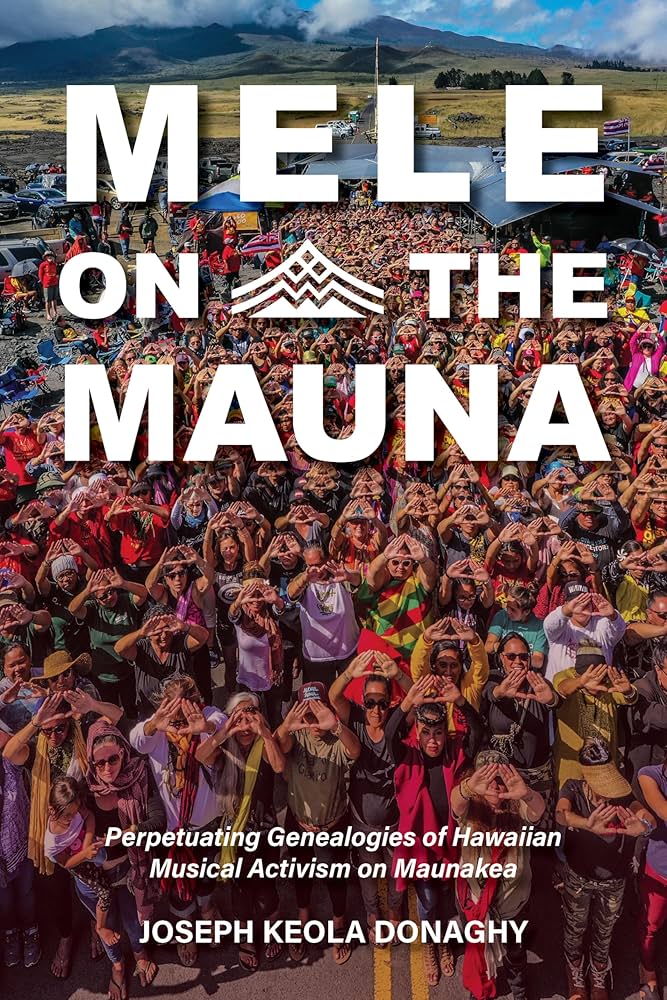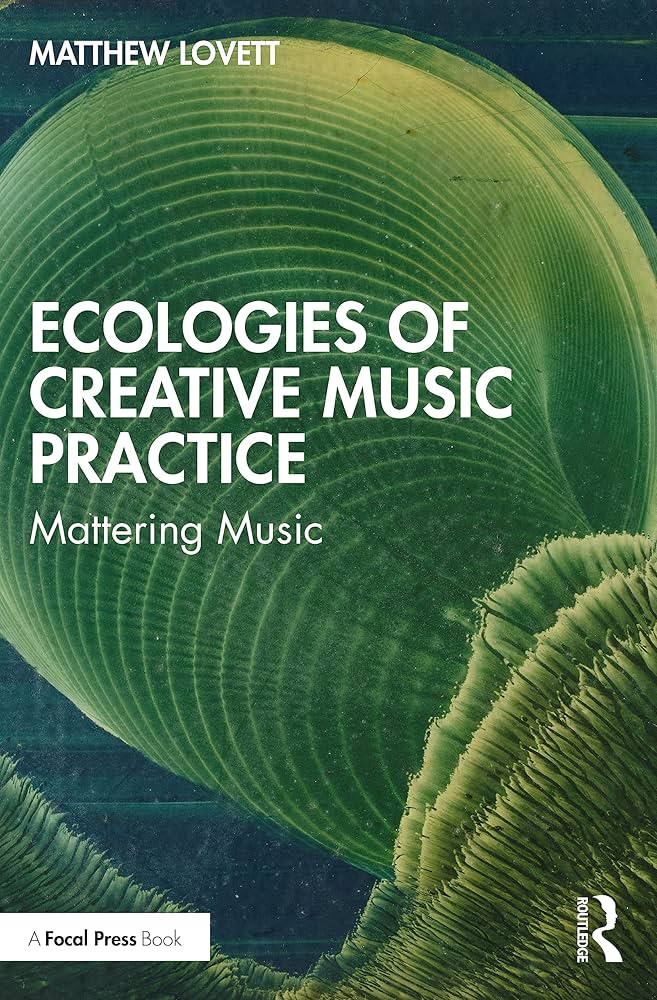You may remember that back in April we did a display about Earth Music for Earth Day where we featured repertoire and books from our collection that focused on the environment. Well, since then, the Music Library has been working behind the scenes to create our own sustainability plan for the library. This is an ongoing process, but we are now ready to share some of the first steps.
We wanted to share them with you now in honor of Climate Action Week (November 2-8, 2024). The key to this week is to connect libraries and climate change conversations in British Columbia and Ontario.
As part of our contribution to Climate Action Week, we have been collecting more resources for you from our collection. In addition to this blogpost and display, you can find them in our new LibGuide about Music and Sustainability. If you have any ideas or suggestions about what we could include in this plan, please let us know!
Books in the collection
Culture and sustainability


- Sustainable futures for music cultures: an ecological perspective edited by Huib Schippers and Catherine Grant analyzes nine case studies of diverse music cultures and details challenges and possibilities for music sustainability. Recommended chapter: “Approaching music cultures as ecosystems: a dynamic model for understanding and supporting sustainability.”
- Cultural sustainabilities: music, media, language, advocacy edited by Timothy J. Cooley with a foreword by Jeff T. Titon highlights the relationship between cultural and environmental sustainability, using five examples to illustrate this. Recommended chapter: “Fiddle-icious: a community model for musical sustainability” by Thomas Faux.
- Music endangerment: how language maintenance can help by Catherine Grant utilizes case studies to demonstrate how to preserve music practices and genres from around the world.
- Music and the environment in dystopian narrative: sounding the disaster by Heidi Hart is a little bit different as it highlights music in media about the climate crisis. Recommended chapter: “Persephone in the late Anthropocene.”
- The (fr)agile orchestra: empowerment strategies for orchestras edited by Gerald Mertens focuses on sustainability for all aspects of the orchestra, including environmentally. Recommended chapter: “The sustainable orchestra: how to develop an orchestra into an organization that implements environmental protections and many other terms of sustainability” by Gerald Mertens.
- Sounding fragilities: an anthology edited by Irene Lehmann and Pia Palme speaks to the interconnectedness and intersectionality of performance and research – including ecology.
Region and sustainability




- Singing and survival: the music of Easter Island by Dan Bendrups traces the history of the Rapanui people of Easter Island and how they have preserved their heritage through music.
- Voices of drought: the politics of music and environment in Northeastern Brazil by Michael B. Silvers emphasizes the link between environment, music, and region while detailing the experiences of drought within Brazil.
- Mele on the Mauna: perpetuating genealogies of Hawaiian musical activism on Maunakea by Joseph Keola Donaghy is a new addition that details how music is used as a form of activism in the protest of a large-scale telescope on sacred ground in Hawai’i.
- Drones, tones, and timbres: sounding place among nomads of the inner Asian mountain-steppes by Carole Pegg is a new publication telling the story of the nomadic Altai-Sayan peoples in Siberia and their use of music to build community.
- Dissonant landscapes: music, nature, and the performance of Iceland by Tore Størvold is a new book in the collection interrogates the links between the landscape of Iceland and its music. Recommended chapter: “The Icelandic pastoral in times of crisis.”
Activism


- Environmental sound artists: in their own words edited by Frederick Bianchi and V.J. Manzo, has a number of interviews with current environmental sound artists which really bring these issues home. Recommended chapters: “Listening to the earth” by John Bullitt and “River listening” by Leah Barclay.
- At the crossroads of music and social justice edited by Brenda M. Romero, Susan M. Asai, David A. McDonald, Andrew G. Snyder, and Katelyn E. Best has been featured in a number of our displays because we think it does really important work on addressing social change. Recommended chapter: “Ecological frictions and borderless futures: art and activism on a sailing ship” by Rebekah E. Moore.
- A song to save the Salish Sea: musical performance as environmental activism by Mark Pedelty chronicles the decades of environmental music for the Salish Sea on the west coast of Canada and the US and how they have been used to mobilize action. Recommended chapter: “Turtle Island’s Idle No More: The aural art of protest.”
Music and the Environment


- Ethnomusicology: a contemporary reader. Volume II edited by Jennifer C. Post features a number of important works from within the field of ecomusicology. Chapters we recommend include: “The ethnomusicologist at the rock face” by Kirsty Gillespie, and “Birdsong and a song about a bird” by Michaael B. Silvers.
- Finding the singing spruce: musical instrument makers and Appalachia's mountain forests by Jasper Waugh-Quasebarth highlights the dichotomy between instrument making, which is simultaneously rooted in the forest, and also a part of a large-scale economic process of consumption. It offers an interesting perspective to consider about how we get our instruments and what the impact of that might be.
- Eco-literate music pedagogy by Daniel J. Shevock offers strategies for centering music education within an ecomusicological perspective.
- The book of music and nature: an anthology of sounds, words, and thoughts edited by David Rothenberg and Marta Ulvaeus includes writing and musical tracks related to the environment and our relationship to it. This is a good starting place for learning about the environment and music.
- The evolving animal orchestra: in search of what makes us musical by Henkjan Honing studies whether animals are inherently musical, and what this means for our own musicality. Recommended chapter: “Perfect pitch.”
Electronic resources



- "Popular Music: Folk and Folk Rock as Green Cultural Production" by John Parham discusses how specific music genres can bring more awareness of ecological ideas to a broader public.
- "How can music help us to address the climate crisis?" by Helen M. Prior speaks to the ways that music can be used to influence environmental beliefs and behaviours because of its impact on mood and identity.
- "Listening to Communities and Environments" by Leah Barclay details the Biosphere Soundscapes project that took place in UNESCO biosphere reserves to explore listening to communities and environments around the world.
- "Artistic activism promotes three major forms of sustainability transformation" by Beatriz Rodriguez-Labajos details ‘artivism’ for the environment through education, ecocritical reflection, and art practice.
- "Ecologies of creative music practice: Mattering music" by Matthew Lovett is a book which covers a range of topics related to contemporary ecologies and music. Recommended chapter: Critical Perspectives on Mattering Music.
- "Live music is a major carbon sinner - but it could be a catalyst for change," an editorial in Nature, details some recent efforts by the music industry to make their tours and events more sustainable.
- Performing environmentalisms: expressive culture and ecological change edited by John Holmes McDowell, Katherine Borland, Rebecca Dirksen, and Sue Tuohy offers both critiques and solutions to the current climate crisis from around the world. Recommended chapter: "Diverse ecomusicologies: making a difference with the environmental liberal arts" by Aaron S. Allen.
- Supporting Vulnerable Performance Traditions: Keeping It Going in Contexts of Continuity and Change edited by Georgia Curran and Mahesh White-Radhakrishnan focuses on maintaining cultural traditions that are endangered. Recommended chapter: “Music Sustainability Research as Activism” in Chapter 1.
- "Green in blue: The environmental impacts of jazz production and consumption" by Haftor Medbøe notes the historical environmental burden of jazz and how it can be greened in the future.
- Listening after nature: field recording, ecology, critical practice by Mark Peter Wright offers a ‘post-natural’ approach to sound using both new and historical sound studies.
- Toward a Sound Ecology : new and selected essays by Jeff Todd Titan has both practical tips for responsible research and also interesting insights into the way we connect to sound.
- "'Legendary,' Environmental Justice, and Collaborative Cultural Production" by Kelly Hay and Rebekah Farrugia in Women Rapping Revolution connects urban geography and planning with eco-musicology and how it relates to the song “Legendary” by Nique Love Rhodes.
- Sounds, ecologies, musics edited by Aaron S. Allen and Jeff Todd Titon brings together new challenges and opportunities for ecomusicology. Recommended chapter: “Eco- Trope or Eco- Tripe?: Music Ecology Today” by Jeff Todd Titan.
- "The cost of music" by Matt Brennan and Kyle Devine tells us the environmental and economic cost to different sound-recording formats.
Scores
- Bleached: saxophone (alto and tenor), guitar, percussion and piano by Libby Larsen
- Envirpronolmelutntional: (Environmental pollution): for accordion, string orchestra & dancer by Wes R. D. Wraggett
- The angry planet: an environmental cantata by Bob Chilcott
- Earth music 1: ‘The Great Barrier Reef’: for orchestra by Edward Cowie
- Flood and drought: for solo mandolin and string quartet by Hauschka
- Ocean world: an ecological musical by Peter Rose
- “Wallum” an Indigenous name for a tropical part of Australian land by Natalya Vagner
- Nabunum’s water: for chamber orchestra, fixed-media and video, 2017 by Melody Eötvös
Recordings
- Earth day heritage: a celebration in music and words by Marin Alsop
- Women warriors: the voices of change: a celebration of global activists who are fighting for social justice: soundtrack from the original live-to-picture symphony concert by Amy Andersson
- Music, language and environment: environmental sound works by David Dunn
- The drop that contained the sea: works on the theme of water by Christopher Tin
- Earth Bow by Sarah Louise